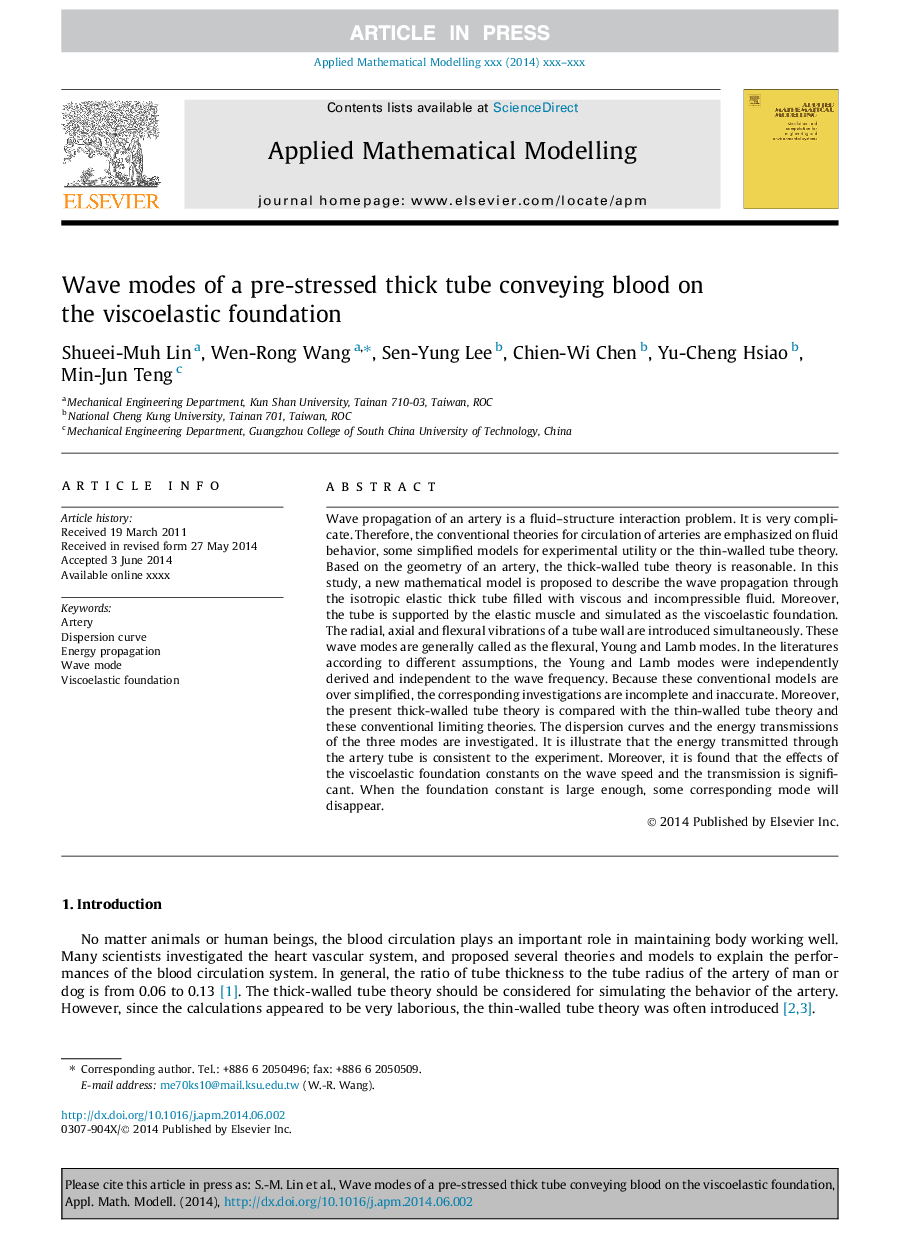| Article ID | Journal | Published Year | Pages | File Type |
|---|---|---|---|---|
| 10677717 | Applied Mathematical Modelling | 2015 | 17 Pages |
Abstract
Wave propagation of an artery is a fluid-structure interaction problem. It is very complicate. Therefore, the conventional theories for circulation of arteries are emphasized on fluid behavior, some simplified models for experimental utility or the thin-walled tube theory. Based on the geometry of an artery, the thick-walled tube theory is reasonable. In this study, a new mathematical model is proposed to describe the wave propagation through the isotropic elastic thick tube filled with viscous and incompressible fluid. Moreover, the tube is supported by the elastic muscle and simulated as the viscoelastic foundation. The radial, axial and flexural vibrations of a tube wall are introduced simultaneously. These wave modes are generally called as the flexural, Young and Lamb modes. In the literatures according to different assumptions, the Young and Lamb modes were independently derived and independent to the wave frequency. Because these conventional models are over simplified, the corresponding investigations are incomplete and inaccurate. Moreover, the present thick-walled tube theory is compared with the thin-walled tube theory and these conventional limiting theories. The dispersion curves and the energy transmissions of the three modes are investigated. It is illustrate that the energy transmitted through the artery tube is consistent to the experiment. Moreover, it is found that the effects of the viscoelastic foundation constants on the wave speed and the transmission is significant. When the foundation constant is large enough, some corresponding mode will disappear.
Related Topics
Physical Sciences and Engineering
Engineering
Computational Mechanics
Authors
Shueei-Muh Lin, Wen-Rong Wang, Sen-Yung Lee, Chien-Wi Chen, Yu-Cheng Hsiao, Min-Jun Teng,
